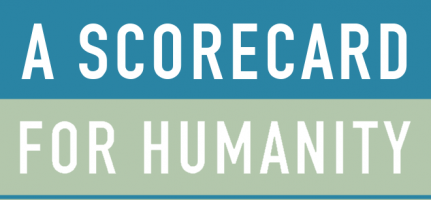A Scorecard for Humanity: Education, Patrinos Psacharopoulos
Assessment Paper
A version of the working paper is available for download here. The finalized paper has been published in How Much Have Global Problems Cost the World? A Scorecard from 1900 - 2050 by Cambridge University Press.
An Assessment Paper on education was written by Harry Anthony Patrinos and George Psacharopoulos and released as a chapter in How Much Have Global Problems Cost the World?
Illiteracy today afflicts 23.6% of the world's population. Yet, in 1900 perhaps 70% were illiterate. Only in the prosperous West, rapid increases in literacy were achieved early in the twentieth century. In developing countries, similarly large (and continuing), gains were made from 1970 to 2000, with the biggest improvements in China.
The costs of low education are substantial. Take Pakistan and Korea, which started with about the same level of education and income in 1950. Today, Korea has an average of 12 years education, whereas Pakistan has not yet reached 6. Korea’s per capita income grew 23-fold versus Pakistan’s 3-fold growth.
In order to compare across 150 years, the economists looked at the costs of illiteracy. In 1900, the cost of not having literacy was 12.3% GDP. Today, that number is close to 7%. By 2050, it is estimated illiteracy will reach about 12% and the cost will have dwindled to just 3.8% of GDP.
Short summary
Formal education is a relatively recent institution in the history of mankind dating a mere two centuries. The recognition that education relates to the country’s development is even more recent, dating back just a few decades. Non-formal education of course existed since time immemorial in the form of philosopher/student or master/apprentice relationship, and some European universities date back to the 13th century. But organized schooling where children of a certain age were obliged to attend school started as late as the nineteenth century in England.
The link between education and economic development was instigated by the so-called human capital school originating at the University of Chicago in the early 1960s. According to early versions of human capital theory, expenditure on education is an investment with many similarities to investment in machines. National resources are used while the student is in school, in the form of direct outlays to education and foregone labor earnings. But later in life more educated workers contribute to national output more than less educated workers. The discounted difference between the cost and benefit flows related to education can lead to estimates of the profitability of investment in human capital.
This basic idea was expanded in the 1980s and 1990s to include predictions of the so-called new growth theory postulating that education, beyond enhancing an individual’s productivity, also has an efficiency boosting “external” effect on others, thus further enhancing national output. A flood of empirical research has followed attempting to estimate the effect of education on economic growth.
Throughout the short history of formal education it has been a perennial challenge as to how to provide the quantity and type of education that would maximize social welfare. In this chapter we define the welfare loss related to education in terms of efficiency and equity. Given the lack of a global utility function, welfare loss in this chapter really means loss of income. The efficiency component is estimated as a counterfactual of higher per capita income or its growth had educational development proceeded faster than indicated in the historical data. The equity component is estimated by the change in the Gini inequality index had countries followed more expansive education policies.
Our estimates of the loss associated with education spanning 1900 to 2050 are based on a comparison of two scenarios: (1) An inertia scenario where countries follow existing education policies and (2) a challenge scenario where countries would have followed more efficiency- and equity-oriented education policies.
Backward and forward extrapolation of the welfare loss is based on coefficients regarding the contribution of education to economic growth and equity in the “actual” or “data-known” period 1950 to 2000 from new estimates and the empirical literature on the subjects and, of course, assumptions regarding the application of such coefficients beyond the range of actual data. Given the highly aggregate nature of this exercise, high and low estimates are given.
The coefficients linking education to economic growth are derived from two subsets of the economics of education literature: (1) Micro estimates of the social rates of return to investment at different levels of education and (2) macro estimates of the contribution of education to economic growth. The data come from historical national accounts statistics and a variety of education databases.


